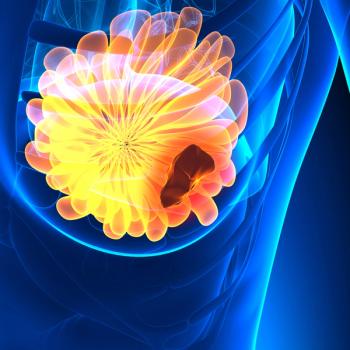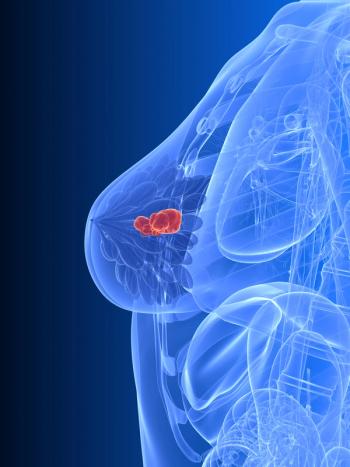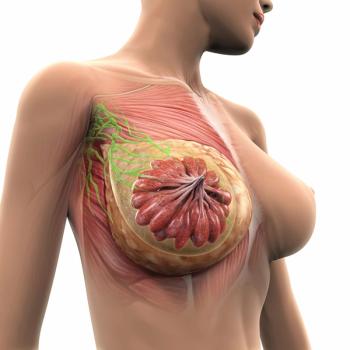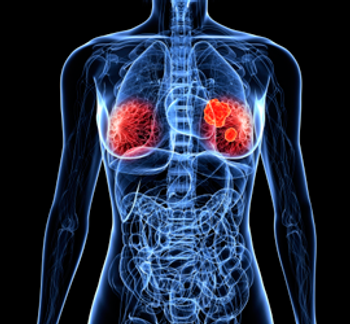
Oncology NEWS International
- Oncology NEWS International Vol 15 No 6
- Volume 15
- Issue 6
Triple-Negative Cancers More Common in Young Black Pts
Young, black breast cancer patients are much more likely than young white patients to have tumors that lack receptors for estrogen, progesterone, and HER2, according to a new, population-based study in about 500 women. This means that many breast cancer patients, including almost half of young black patients, "have tumors for which there is no targeted therapy," said lead author Mary Jo Lund, PhD, assistant professor of epidemiology, hematology, and oncology, Rollins School of Public Health and Winship Cancer Institute, Emory University, Atlanta.
WASHINGTONYoung, black breast cancer patients are much more likely than young white patients to have tumors that lack receptors for estrogen, progesterone, and HER2, according to a new, population-based study in about 500 women. This means that many breast cancer patients, including almost half of young black patients, "have tumors for which there is no targeted therapy," said lead author Mary Jo Lund, PhD, assistant professor of epidemiology, hematology, and oncology, Rollins School of Public Health and Winship Cancer Institute, Emory University, Atlanta.
Dr. Lund presented the study results at the 97th Annual Meeting of the American Association for Cancer Research (abstract LB-4).
Because they lack the receptors, triple-negative tumors cannot be treated with two of the most effective, currently used breast cancer drugstamoxifen, which targets the hormonal receptors, and trastuzumab (Herceptin), which targets the epidermal growth factor receptor 2 (HER2), Dr. Lund said. The findings of this study highlight the need to know more about triple-negative tumors and to develop more and better targeted drugs, she said.
The researchers looked at breast tumors from 117 black and 362 white Atlanta women aged 20 to 54 who are enrolled in another population-based, case-control breast cancer study. Dr. Peggy Porter tested the tumors for the three proteins at a central laboratory using immunohistochemistry.
Results showed that 46.6% of the black women had triple-negative tumors, compared with 21.7% of the white women, even after adjusting for age and stage of disease at diagnosis. Adjusting for socioeconomic status also did not alter the results, Dr. Lund said.
Overall, the women with triple-negative tumors were much more likely to have high-grade tumors and higher abnormal expression of the tumor suppressor p53. The proportion of black women with triple-negative tumors remained more constant regardless of age, while in white women triple negatives were more common at a younger age. However, even the youngest white patients had fewer triple-negative tumors than older black patients.
The findings show how little is known about the risk profiles of triple-negative breast tumors, Dr. Lund said. More research is needed, she said, on the biological mechanisms that may underlie the increased risk and the associations between triple-negative breast tumors and stage of disease, other biomarkers, genetic factors, and outcome. She also urged the collection of data on HER2 status by cancer registries.
Articles in this issue
over 19 years ago
Artists Turn Flowers & Curves Into 'Forms' and 'Figures'over 19 years ago
Study to Examine Outcomes Disparities in Pediatric ALLover 19 years ago
Thalidomide Has 'Changed the Paradigm' in Myeloma Rxover 19 years ago
CA4P Gets Orphan Drug Statusover 19 years ago
Testicular Ca Survivors at Increased Risk for CV Eventsover 19 years ago
A Novel Brings a Cancer Research Laboratory to Lifeover 19 years ago
NCCN Reveals New Venous Thromboembolism Guidelineover 19 years ago
Lapatinib New Option for Metastatic HER2+ Breast Caover 19 years ago
FDA Approves Dacogen for Treating All MDS Subtypesover 19 years ago
Noninvasive Ablation Relieves Chronic Chest Wall PainNewsletter
Stay up to date on recent advances in the multidisciplinary approach to cancer.





















































































